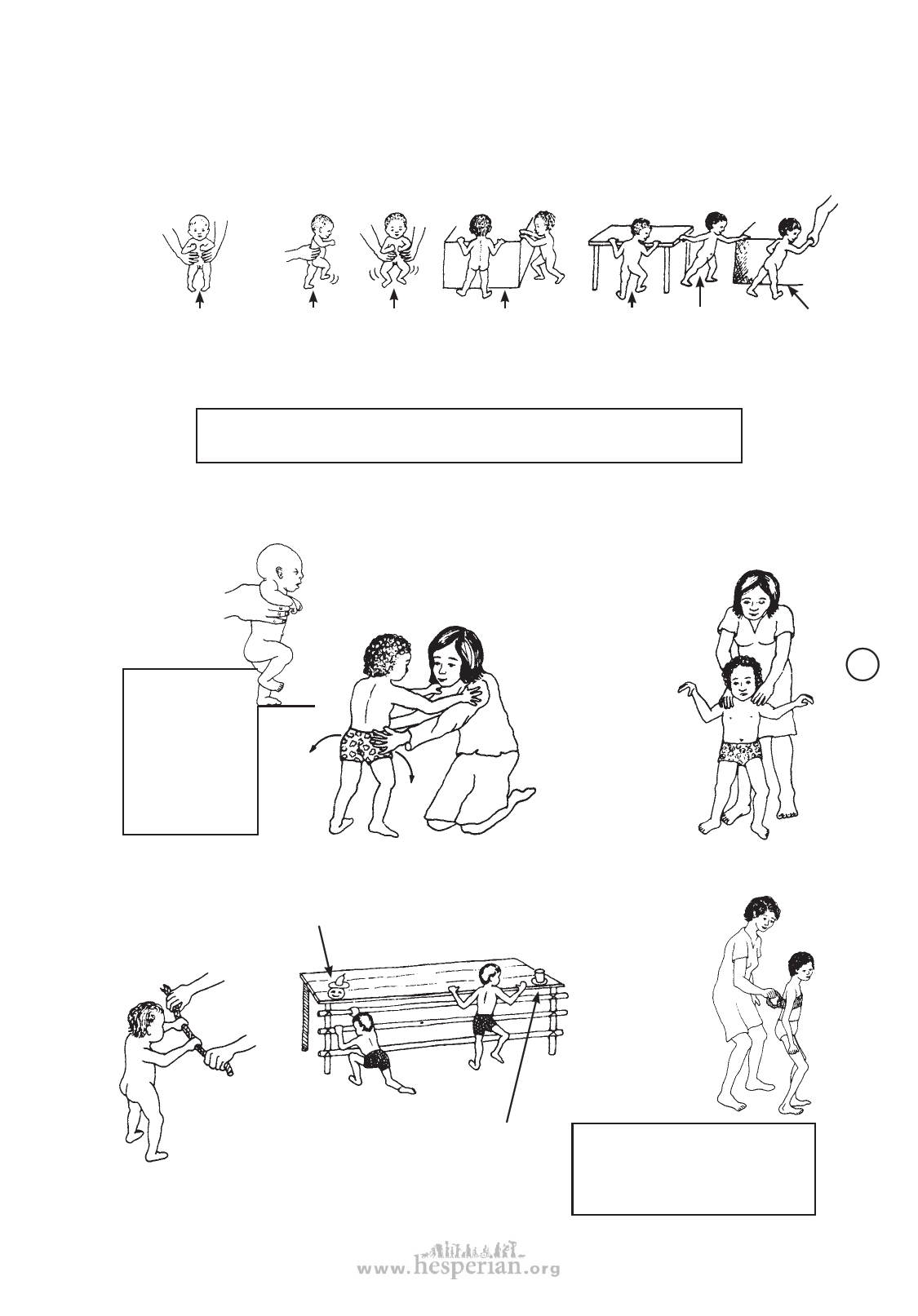
6. Activities for standing, walking, and balance
DEVELOPMENT ACTIVITIES 311
Normally a child progresses through these stages:
bears part
of weight
automatically
when held
like
this
automatically
‘steps’
if tilting
forward
sinks down
when stood
up,
stands pulls
holding up to
on standing
(standing
reflex)
(stepping
reflex)
0-3 months 0-3 months 3-6 months
7-9 months
steps
sideways
holding
on
steps
between
objects
walks with 2 hands,
1 hand, and finally,
no support
9-12 months 9-12 months 1-3 years
You can prepare a child for walking by encouraging each of the above stages as the
child develops.
CAUTION: If the child cannot balance when sitting, do not work on walking
yet. Help her develop sitting balance first.
Hold the baby so that she
uses the early stepping
reflex to
strengthen
her legs.
You can
even bounce
the baby
gently.
CAUTION: In
children with
spasticity, this
activity may
increase muscle
stiffness. DO
NOT DO IT. (See
p. 93 and 291.)
When the child begins to stand, support
her hips with your hands. Spread her feet
apart to form a wide base. First do this
from in front, later from behind.
Move her
gently from
side to side,
so that she
learns to
shift her
weight from
one leg to
the other.
As she gains better
balance, you can
provide a light
support
at the
shoulders.
cp
Or have the child hold
a hose or rope. Because
it is flexible, he needs
to balance more.
To encourage a child to pull up to
standing, put a toy he likes on the
edge of a table.
Later, he can
hold onto the
rope with one
hand only.
To encourage him to take steps,
put something he likes at the
other end of the table.
When a child can almost walk alone
but is afraid of falling,
tie a cloth around
his chest.
Hold the
cloth, but
let it hang
completely
loose. Be
ready to
catch him
if he falls.
CAUTION: Do not let the child
hang by the cloth. Have him bear
his own weight. The cloth is
only to catch him if he falls.
disabled village children